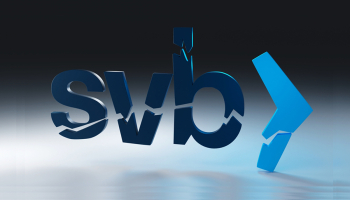Who’s Paying for SVB and Signature Bank Failures?
The FDIC has set out its proposal for how to fund the losses incurred from March’s banking collapses
- |
- Written by Banking Exchange staff

Large banks with high levels of uninsured deposits will bear the brunt of estimated $15.8 billion loss incurred by the Federal Deposit Insurance Corporation (FDIC) from the collapses of Silicon Valley Bank and Signature Bank.
Under proposals put forward by the FDIC last week, banks that benefitted the most from the protections put in place following the collapses will contribute the majority of the “special assessment” to cover the Deposit Insurance Fund’s losses.
The FDIC was given temporary powers to protect uninsured deposits to prevent a wider loss of confidence in the banking system immediately following the failures of SVB and Signature. This move cost the Deposit Insurance Fund $15.8 billion, the FDIC said.
Beginning in the first quarter of next year, the FDIC plans to collect a special assessment fee. Full payments will be spread out over eight quarters.
The corporation said it had identified 113 banks that would be charged the special assessment fee given their high levels of uninsured deposits. Banks with more than $50 billion in total assets were to pay “more than 95%” of the fee to the FDIC, and no banks with less than $5 billion are to be charged.
FDIC chairman Martin Gruenberg said the fee collection schedule was designed to minimize the negative effects on bank liquidity. The final total and collection period may vary depending on the results of the FDIC’s ongoing efforts to divest the remainder of SVB’s and Signature’s assets.
Michael Hsu, acting comptroller at the Office for the Comptroller of the Currency, said the proposal was “fair” and “establishes a healthy precedent” for absorbing losses from future failures.
“The recommended approach supports a diverse banking system by minimizing costs on community banks, which are critical to local economies across the country,” Hsu said.
Banking groups also welcomed the FDIC’s decision to exclude smaller community banks from the payments.
Rebeca Romero Rainey, president and CEO of Independent Community Bankers of America, said the FDIC’s proposal “recognizes the importance of distinguishing large banks that pose systemic risk to the financial system from the thousands of local community banks that serve consumers and small businesses”.
“Community banks should not have to bear any financial responsibility for losses to the Deposit Insurance Fund caused by the miscalculations and speculative practices of large financial institutions,” Rainey added. “Large banks should pay for the special assessment because they are the chief beneficiaries of these two receiverships.”
Rob Nichols, president and CEO of the American Bankers Association, said: “While we are still reviewing the details of the proposed special assessment, including the methodology and the dissenting votes, we appreciate the FDIC’s decision to exclude most community banks.
“Once we receive input from our members, we will be prepared to provide industry feedback to the FDIC on the special assessment, the timing of the expense, and the ongoing increase in quarterly Deposit Insurance Fund assessments on banks.”
Tagged under Community Banking, Feature3, Feature, FDIC,













